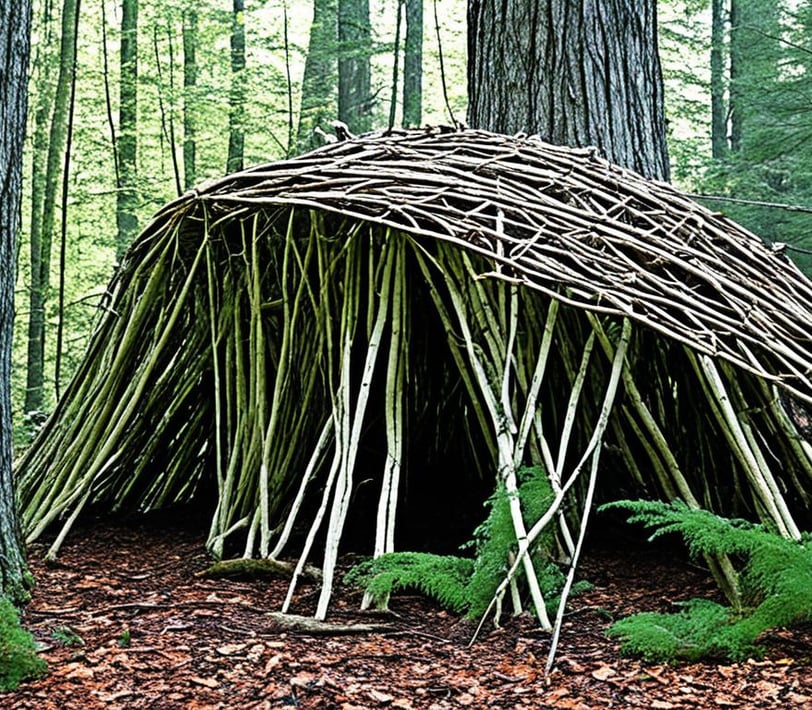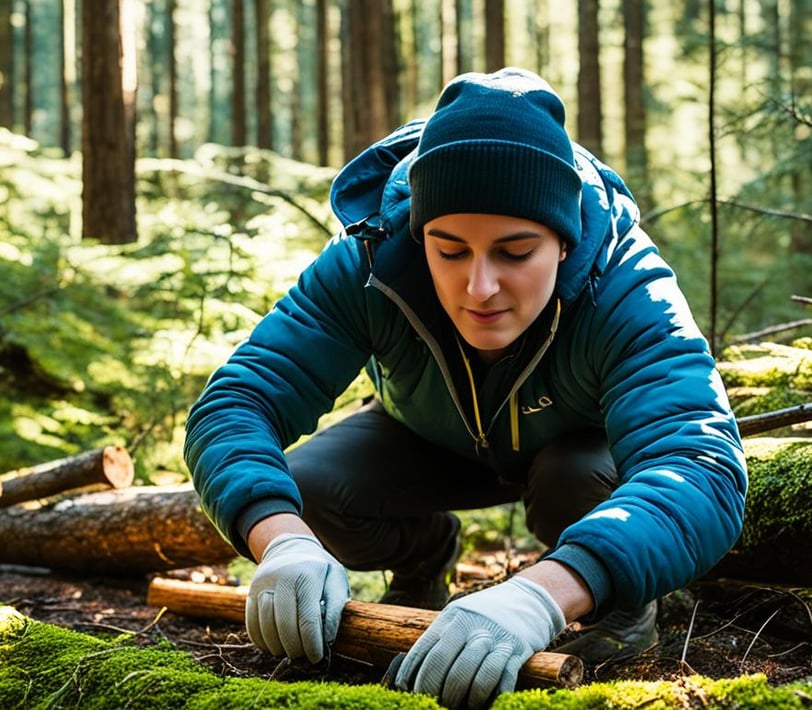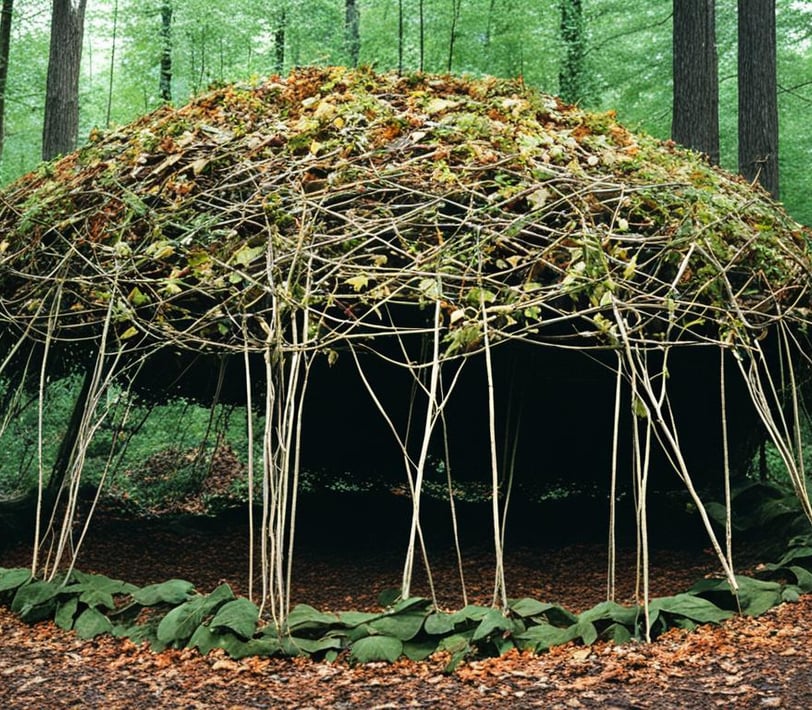How to build a survival shelter in the Wild: Expert Guide
Learn how to build a survival shelter in the wild with our expert guide. Discover the best materials, DIY techniques, and bushcraft ideas for creating emergency shelters. Stay warm and safe in any wilderness situation with practical tips and essential gear recommendations for all your survival needs.
The Bug Out Bunker
8/12/20245 min read


Knowing how to build a survival shelter in the wilderness can save your life.
It's vital whether you're an experienced adventurer or a beginner.
This guide will teach you how to use natural materials and DIY methods to build shelters.
You'll learn about emergency tarps and bushcraft ideas to stay warm and safe in the wild.
Key Takeaways
Survival shelters are crucial for staying safe and comfortable in the wilderness
Learn how to build a variety of shelters using natural materials and DIY techniques
Discover essential tips for choosing the right location and constructing the shelter frame
Understand the key elements of an effective survival shelter, from insulation to waterproofing
Be prepared for any wilderness emergency with this expert guide on survival shelter essentials
Importance of Survival Shelters in the Wilderness
Building survival shelters is key in the wilderness. They protect you from the weather, keep you warm, and give you a safe place to rest. Without one, you could get hypothermia, frostbite, or get sick from being wet and cold. It's vital to know how important survival shelters are for staying safe outside.
Types of Survival Shelters
There are many survival shelters, each good for different places and materials. Natural shelters like caves and rock overhangs are easy to make but might not keep you warm well. Debris huts, wigwams, and thatched grass and cattail shelters are better at keeping warm but take more work to build. Tarp structures are also an option. Desert shelters and snow caves and winter shelters are made for hot and cold climates. Knowing the good and bad of each shelter will help you pick the right one for your situation.
"Shelter is one of the most critical elements for wilderness survival. Without proper protection from the elements, you put yourself at serious risk of exposure, hypothermia, and other life-threatening conditions."
The benefits of survival shelters include:
Protecting against wind, rain, snow, and other bad weather
Keeping you warm by reducing heat loss
Giving you a safe, dry spot to rest and recover
Keeping away wildlife and unwanted visitors
Making you more comfortable and keeping your spirits up when surviving
Knowing about the different types of survival shelters and their importance helps you build a good shelter. This shelter will keep you safe and comfy in the wild.
The Complete Prepper's Survival Bible
How to Build a Survival Shelter in the Wild
Building a survival shelter in the wild needs careful planning and action. First, pick the right spot for your shelter. Look for high, dry ground with natural protection from wind and weather. Stay away from dead or unstable trees and choose a spot that gets a lot of sunlight.
Step 1: Choose the Right Location
Think about these important things when picking your shelter spot:
Elevation - Pick a high, dry place to avoid floods or standing water.
Wind and weather protection - Find natural barriers like hills, trees, or rocks to protect your shelter.
Sunlight - Make sure your shelter gets sunlight by facing it south or southeast.
Avoid hazards - Don't pick spots near dead or unstable trees, or areas that could have rockslides or avalanches.
Step 2: Construct the Frame
After finding the perfect spot, start building the shelter frame. Look for a strong ridgepole, as thick as your forearm, and set it between two trees or logs. Add angled ribs along the ridgepole, close together. You can make the frame stronger with lashings and a woven branch lattice.



With the frame up, start adding insulating materials like leaves, grass, pine needles, and branches. This makes your shelter weatherproof and warm. By using trees and branches and lashing and securing the shelter, you'll have a cozy place in the wilderness.
Essential Elements of a Survival Shelter
Building a strong survival shelter in the wilderness means focusing on four key things: waterproofing, insulation, fire, and windproofing. These elements help make a shelter warm, dry, and safe from the elements.
Waterproofing is key to keeping your shelter dry. Use natural materials like thick leaves, grass, bark, or thatched vegetation. They keep water out, protecting you from rain, snow, or other moisture.
Insulation traps heat in your shelter. Use dry materials like cattails, milkweed, or leaves and pine needles. They keep your body heat in and make the shelter cozy.
Waterproofing with natural materials like leaves, grass, or bark
Insulation using dry, air-trapping materials such as cattails or pine needles
Incorporating a fire reflector to radiate warmth inward
Windproofing through the shelter's structure or strategic location
An internal fire can be risky, but a fire reflector outside can warm you up safely. It's a smart way to heat your shelter. Also, making sure your shelter is windproof is key to keeping warm and safe.
"By incorporating all four of these essential elements, you can construct a warm, dry, and safe wilderness survival shelter from the natural resources around you."
Using natural shelter materials and debris like leaves, grass, bark, and pine needles is crucial. They help build a strong, effective shelter that keeps you safe and comfy in the wild.


Conclusion
Building survival shelters is key in the wilderness. It can save your life in an emergency. Knowing how to make a shelter from nature's resources is crucial. It's important for everyone, whether you love the outdoors or just want to be prepared.
This guide showed how important shelters are in the wild. We looked at different types and how to build them. Each step is vital for a shelter that keeps you safe from the weather.
When you go outside, knowing how to make a good shelter is a big help. Practice these skills and get better at them. This way, you'll be ready for the wilderness and stay safe. Always be alert, informed, and protected – it could save your life.
FAQ
What is the most important survival skill once I have water?
Once you have water, building survival shelters is key. These shelters are like grown-up forts. They keep you warm, dry, and safe in the wild.
Why is building effective survival shelters a crucial wilderness survival skill?
Building good survival shelters is vital. They protect you from the weather, keep you warm, and give you a safe place to rest. Without one, you could get hypothermia, frostbite, or get sick from being wet and cold.
What are the different types of survival shelters I can build in the wild?
You can build many survival shelters, each for different places and materials. Natural shelters like caves and snow caves are easy to make but might not keep you warm well. Debris huts and tarp structures are better at keeping warm but take more work to build.
How do I choose the right location to build a survival shelter?
Picking the right spot for a survival shelter is important. Look for high, dry ground with natural protection from wind and rain. Stay away from dead or shaky trees and aim for a spot that gets a lot of sunlight.
What are the key elements I need to incorporate into my survival shelter?
A good survival shelter needs four main things: it must be waterproof, insulated, have a fire, and be windproof. Use natural materials like leaves and grass to keep water out. Insulation can be dry plants like cattails. An outside fire can warm you up without being inside. And, make sure your shelter is built to keep out the wind to stay warm and safe.
Source Links
Thanks and best regards
The Bug Out Bunker
Visit the link below and learn about the lost generator. Generate Unlimited, Free Electricity With
A Secret Invention Hidden Since 1923
This post may contain affiliate links. If you make a purchase through one of these links, we may earn a small commission at no additional cost to you. We only recommend products and services that we have personally used and believe will add value to our readers. Your support helps us continue to provide valuable content. Thank you for your support!
Survival
Stay prepared for any scenario with our expert insights.
© 2024. All rights reserved.
